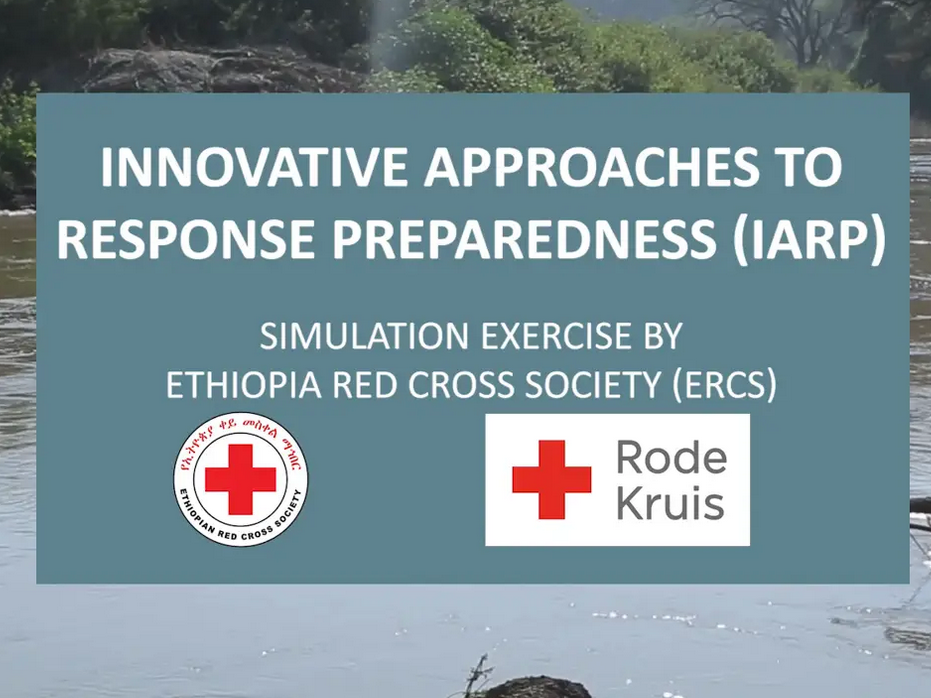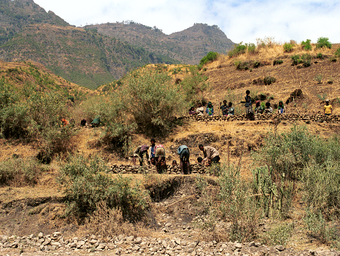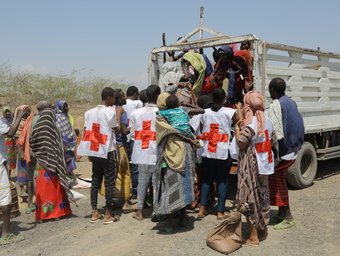Ethiopian Flood Trigger Simulation: Optimizing Early Action Protocols
(This story was first published by 510, Netherland Red Cross, here.)
Flooding due to heavy rain continues in Ethiopia, with over 500,000 people affected and approximately 300,000 people displaced since July 2020. Analyzing the impact of previous floods is the foundation of forecasting the possible impacts of future events. When events like heavy rainfall and overflowing river banks follow a similar pattern as historical data, this can be used to inform the development of timely forecasts and warnings. Forecasts provide a time window of opportunity that enables a proactive approach in which an Early Action Protocol (EAP) can be carried out to minimize the impact of the floods. Simulation exercises of this protocol are executed in order to discover its effectiveness and improve the overall process.
This blog shares insights from the simulation of the flood Early Action Protocol in Ethiopia that took place from March 8th until March 12th 2021.
Background on the Impact Based Forecasting (IBF) Portal and Early Action Protocol (EAP)
510’s Impact Based Forecasting (IBF) portal is developed in order to integrate data and visualize the impact a flood will have. ‘A trigger model, which is used in the portal, is developed in order to determine at what threshold the Early Action Protocol (EAP) should be activated’ Aklilu Teklesadik (510’s Technical Project Manager) elaborates. The portal allows proactive response that mitigates the impacts brought by hazardous weather events. The EAP is developed collaboratively with all organizations involved to decide on what anticipatory actions to undertake. This for example includes the evacuation of residents and livestock, the clearing of drainages and reinforcing river banks, distribution of clean water to evacuated people and the distribution of cash or vouchers in support of these early actions.
Organizations involved
The Red Cross Red Crescent Climate Centre (RCCC) provided technical support in the development of the EAP. The IFRC validated the EAP and provides funding for the Ethiopian Red Cross Society (ERCS) to perform readiness, preposition and the required anticipatory actions included in the EAP once it is activated. The development of the floods EAP as such, and the simulation exercise to test the EAP is part of a bigger program called Innovative Approaches to Response Preparedness (IARP), coordinated by the Netherlands Red Cross and it’s data & digital team 510 together with the Red Cross Red Crescent Climate Centre. This is a 5-year program that runs in Ethiopia, Uganda and Kenya, where early warning/early action systems are developed together with the host national societies. The local government sectorial offices contributed in both the EAP development as well as simulation exercise. The National Disaster Risk Management Commission (NDRMC), National Meteorology Agency, Basin Development Authority, Ministry of Agriculture, Ethiopian Space Science Institute, World Food Programme (WFP) and UNOCHA also provided technical support. The IKEA Foundation provides the funding for IARP.
Simulating the flood trigger
When asked about the purpose of a simulation of the flood trigger Sirak Temesgen (Regional Disaster Risk Reduction Delegate at NLRC) explained: ‘simulation of the flood trigger was conducted to test assumptions and to see if the EAP currently runs as effective as possible or if there are potential tweaks that can be made in the process.’ He continues by saying that ‘the simulation is necessary to test whether the current early actions are actually relevant to the community’. The Technical Advisor for Red Cross Red Crescent Climate Centre, Aderajew Admassu points out that the simulation contributes to the preparedness of the communities involved: ‘By executing the simulation a contribution to flood diversion work for an actual threat will be made.’
Field activities day by day
Day 1 & 2
The trigger level was reached, and the IBF Portal sent an automatic message to the National Disaster Risk Management Commission (NDRMC). An intervention area map, which shows the areas where the event is expected to happen, was provided via the IBF Portal. The early warning committee was then informed in order to conduct a field study in those areas that would be critically impacted. This way it was possible to contextualize the information of the trigger to the reality on the ground, which is used to determine relevant anticipatory actions. A recommendation was then drafted for all parties involved.
The alert message with the identified actions needed to be taken from the NDRMC to the District Food Security Bureau focal person. The NRDMC communicated to the District Food Security Bureau focal point, sharing the message and identified early actions. The District Early Warning Committee specified field level area specific actions and assigned roles for sectors based on NDRMC’s alert message. Here, the committee identified the flood disaster exposed Kebele (level of administrative structure in Ethiopia) and set a direction of early action activities. Next, the District Early Warning Committee signed and the District Food Security Bureau focal person sent area specific early actions to Kebele Administrator.
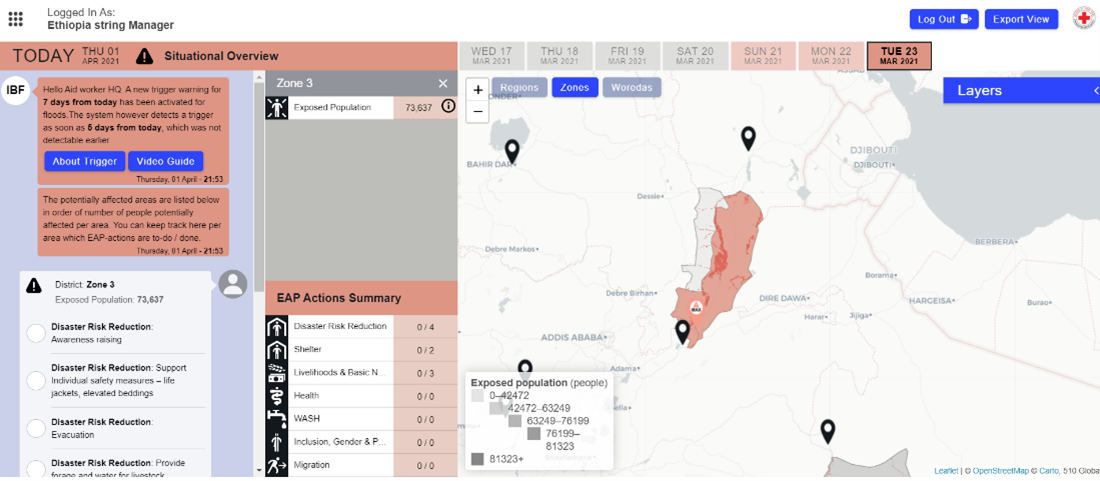
Day 3 & 4
The Kebele Administrator informed the Kebele Early Warning Committee about the received alert message and flood early actions from the District Food Security Bureau focal person, and the committee developed a detailed early actions implementation plan and immediately started arranging necessary inputs to implement these early action activities in collaboration with the concerned offices. To implement the early actions, the support of financial service providers was needed. Commercial banks were not an option and the team approached micro-finance institutions in the region. The agreements between ERCS and the institutions were made. Volunteers of ERCS started the community sensitization by visiting local communities using loudspeakers. The threshold was also checked again, as part of the protocol, to see if the threshold was still reached. After this check the anticipatory actions were set in motion.
Day 5 & 6
The logistics were mobilized and the implementation team assembled. Through the support of the Awash River Basin Authority a dozer was deployed to the flood site for dike maintenance and to clear drainage channels. Volunteers helped sandbagging and distributed the provided shelter materials and cash to local communities expected to be impacted. The evacuation of residents and livestock to an elevated location began and temporary shelter in the safe area was constructed. Drinking water was transported to the people in the evacuation zone.
What did we learn from the simulation?
- If the team is well organized and logistics are in place it is possible to implement the flood EAP with a 7-day lead time.
- The overall experience of the simulations confirms that the 7-day lead time is sufficient time to do critically life-saving interventions. However, logistical gaps were identified and these will be addressed and taken into account during the next simulation. Need for quick exploration of the potentially affected area one week before the event was accentuated.
- The simulation increased key stakeholders confidence in early action. Parties received confirmation that the anticipatory actions outlined in the EAP were indeed practical to be implemented operationally.
- During the simulation, it is important to not only involve formal leadership in the area, but also the traditional/community leaders. This can build more trust through the engagement process with the communities.
- Ensure that agreements with financial services providers are put in place well in advance. The use of commercial banks is not an option in many areas.
- Although it is a simulation, the activities were done in such a way that it contributes to the reduction of real flood risk in the area. By strengthening weak river banks and also building the capacity/awareness and strengthening relationships between all organizations involved and the local communities.
- Simulations are not only good for testing your assumptions, it can create (renewed) energy and motivation among the organizations involved to implement the Anticipatory Action approach.
- With short lead times a combination between cash and in-kind support could help the community choose the early action that is most relevant to them.
- The process of working with 510 helped to build confidence in the usefulness of having the right set of data as it enabled the quick decision making process.
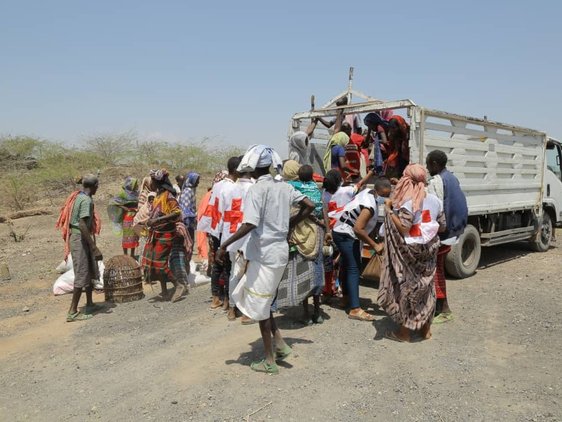
Evacuation of residents, Photo by: Netherlands Red Cross
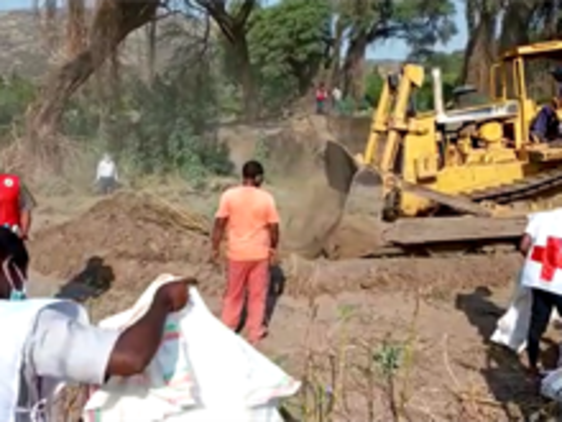
Dozer on site clearing drainages, Photo by: Netherlands Red Cross
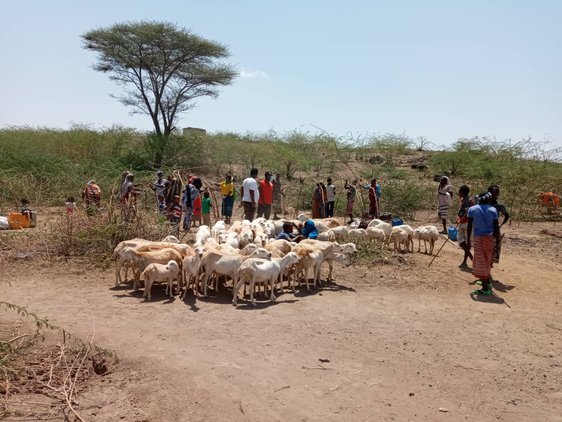
Evacuation of livestock, Photo by: Netherlands Red Cross
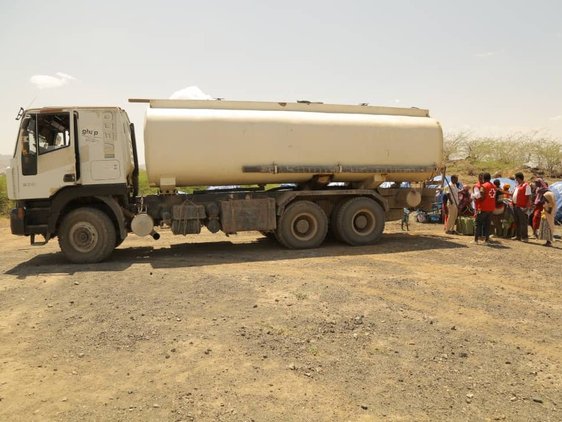
Trucking and distribution of clean water, Photo by: Netherlands Red Cross
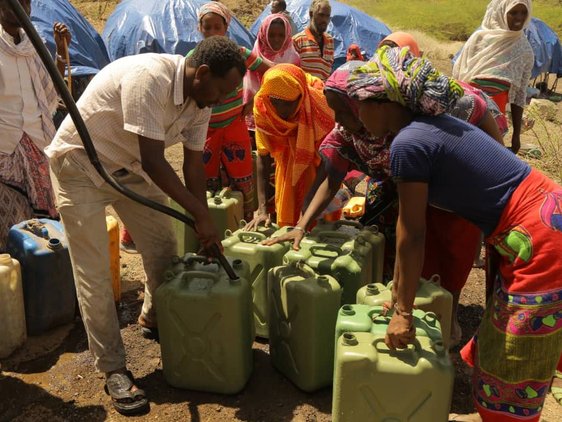
Distribution of provided shelter materials, Photo by: Netherlands Red Cross

Evacuation of residents, Photo by: Netherlands Red Cross
Dozer on site clearing drainages, Photo by: Netherlands Red Cross
Evacuation of livestock, Photo by: Netherlands Red Cross
Trucking and distribution of clean water, Photo by: Netherlands Red Cross
Distribution of provided shelter materials, Photo by: Netherlands Red Cross
Role of 510
The ERCS and 510 worked closely together throughout the entire simulation. The data analysis was conducted by 510 and supervised by Aklilu Teklesadik (510’s Technical Project Manager). ‘The overall experience of working with 510 was fantastic, Aklilu was the backbone of the entire process,’ said Sirak Temesgen (Regional Disaster Risk Reduction Delegate at NLRC). ‘The other advantage of working with Aklilu is that he knows Ethiopia quite well and therefore can easily contribute to discussing local context issues’ he adds.
Next steps
In total there will be two simulations executed. The follow-up simulation will be conducted in the area of Itang. When asked about the reason for choosing this area Temesgen elaborates by saying that ‘the livelihood zone and culture is significantly different from that of the first (Amibara). This simulation will take place in order to gather new potential learnings here.’ 510 will continue its data and digital support in the next simulation along with assisting to incorporate the lessons learned from this first simulation of the EAP for floods and applying this knowledge to other FbA/IbF tools.
Play Video
